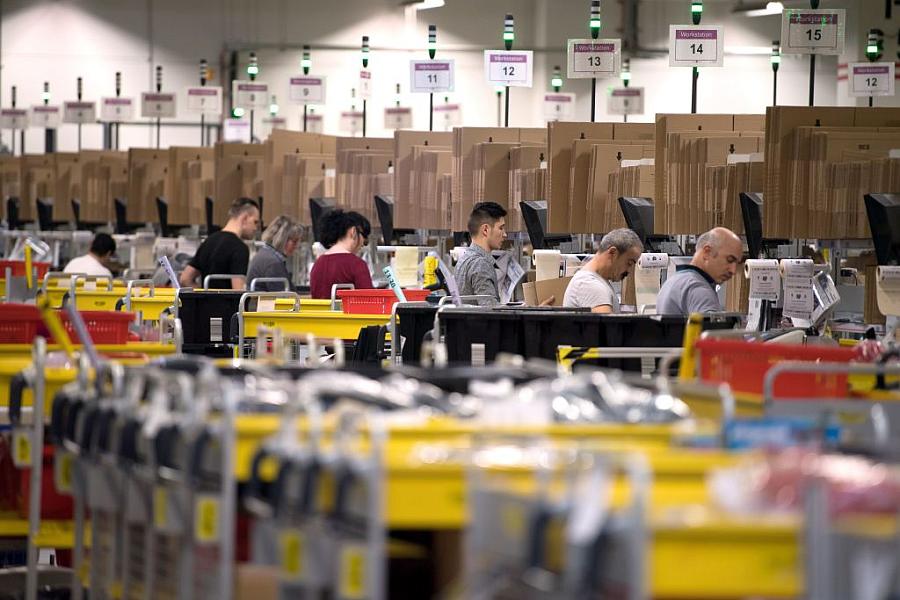Most kids on public coverage have parents who work for big companies, new study finds

(Photo: Swen Pfortner/AFP/Getty Images)
The conventional wisdom is that kids are on government health insurance because their parents are unemployed or work at small businesses with meager benefits.
A study released this week debunks that theory.
Research from the PolicyLab at Children’s Hospital of Philadelphia found that the majority of children insured through Medicaid or the Children’s Health Insurance Program (CHIP) — more than 70% — have a parent employed by a large company. The study is being published in the July issue of Health Affairs.
“The study really demonstrates that public insurance really plays a big role for working families in the U.S.,” said Doug Strane, a researcher at PolicyLab and the study’s lead author. “It goes back to the escalating cost of health care, costs families and employers aren’t really able to keep up with.”
Working families' reliance on government-sponsored health coverage comes at a precarious time for insurance access: In 2017, the rate of uninsured children rose for the first time in more than a decade. And in 2018, about 830,000 fewer kids were on Medicaid or CHIP than the year prior.
This latest research came out of a 2016 study by the PolicyLab that found a rising number of working families were turning to public insurance for their kids. This time around, the researchers wanted to find out where those parents were employed.
Strane said it was obvious why mothers and fathers working for small firms would turn to government insurance for their kids. He noted that small businesses — those with fewer than 50 workers — aren’t required by law to provide health coverage to their employees. Of the small companies that do offer it, much of it is unaffordable and many of the businesses don’t extend it to dependents.
“If you’re a family of four earning $25,000 working at a small business and you’re expected to pay $5,000 a year for health-insurance premiums and $10,000 for a deductible, that’s not really feasible for most low-income families,” Strane said.
But the part that was more surprising was how many parents who worked for large companies insured their children through Medicaid or CHIP, since we tend to think of large companies as offering more robust health coverage for their employees.
The study found that between 2008 and 2016 the percentage of low-income parents who worked for small companies and insured their kids through Medicaid or CHIP rose from 53% to 79%, while the percentage of families employed by large firms with kids on public coverage grew from 45% to 69%.
The largest increase in kids on public coverage for any given group was among moderate-income families ($48,500 to $72,750 a year for a family of four) in which a parent worked for a small company.
But since so many people are employed by big companies, it was those parents who have driven the larger shift of children onto public coverage.
“What that signaled to us is even those families who worked at jobs thought of as having robust benefits are being priced out (of the insurance market),” Strane said.
The group with the lowest rates of kids on Medicaid or CHIP — 14.4% — were parents employed by the public sector, the study found. That’s compared to 71.1% for large companies and 14.5% for small firms.
The researchers went back to 2008 in order to capture some of the effects of the recession. They theorize that as people lost jobs during the downturn and went on public insurance, many of them left their children on it even after going back to work once the economy improved, because the coverage offered by their employers was too expensive.
“If a family is earning $30,000 or $40,000 a year and see their kids can stay covered on CHIP or Medicaid and pay less in premiums or out-of-pocket coverage, it makes sense for the families to keep kids on public insurance,” Strane said. “We always think of insurance as a ‘kitchen-table issue.’ A family with limited financial resources is making the rational choice of keeping high-quality coverage through Medicaid or CHIP.”
Strane said researchers are still exploring policy solutions for this problem, such as whether a rule in the Affordable Care Act that outlaws people offered “affordable” employer-sponsored insurance from getting their families subsidized coverage through the marketplace needs to be tweaked.
He said this study proves that some recent political maneuvers in the nation’s capital — delaying funding reauthorizations for CHIP or proposals to turn Medicaid into block grants, for instance — don’t square with the on-the-ground reality for many working families.
“We need to have really intentional conversations about children’s health insurance in the U.S.,” Strane said. “Every year it costs families more money to get the same coverage or even lesser coverage than the year before.”

